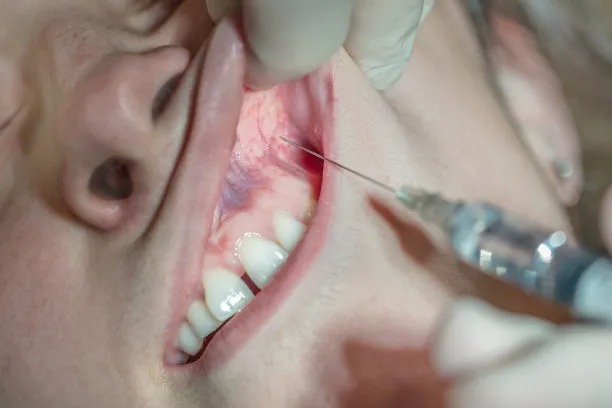Understanding Periodontal Disease Its Causes Symptoms and Effective Treatment Options for Better Oral Health
Summary: Periodontal disease is a prevalent oral health issue that affects millions worldwide. This article delves into the causes, symptoms, and effective treatment options for periodontal disease, emphasizing the importance of understanding this condition for better oral health. Periodontal disease is primarily causative due to poor oral hygiene, leading to plaque buildup and gum inflammation. Recognizing its symptoms, including swollen gums and bad breath, is crucial for early intervention. Effective treatments range from professional cleanings to surgical options, tailored to the severity of the condition. Our goal is to empower readers with knowledge to combat periodontal disease effectively.
Understanding the Causes of Periodontal Disease

Periodontal disease is primarily caused by poor oral hygiene practices that allow plaque to build up on teeth and harden into tartar. Plaque is a sticky film of bacteria that forms on teeth, and if not removed through regular brushing and flossing, it can irritate the gums and lead to inflammation. Additionally, other factors like smoking, hormonal changes, and certain health conditions can exacerbate the risk. Understanding these causes is critical for prevention.
Other significant contributors to periodontal disease include genetics and systemic diseases such as diabetes. Genetics may influence the bodys response to bacteria and inflammation. Individuals with diabetes often experience a higher level of inflammation and are more susceptible to infections, including those affecting the gums, which can worsen their periodontal health.
Furthermore, medications that reduce saliva flow can also increase the risk of gum disease. Saliva plays a crucial role in neutralizing acids and washing away food particles and bacteria. When saliva production is hindered, the mouth becomes a breeding ground for harmful bacteria, making it essential to consider both lifestyle and health factors in the prevention of periodontal disease.
Recognizing Symptoms of Periodontal Disease
One of the first noticeable symptoms of periodontal disease is gum inflammation, characterized by redness and swelling. People may also experience gum bleeding during brushing or flossing, which should not be ignored. Swollen gums can often lead to more severe complications if left untreated, so its vital to pay attention to these early warning signs.
Another common symptom is persistent bad breath or halitosis, which can be embarrassing and indicative of underlying gum issues. The buildup of bacteria in the mouth can produce foul-smelling compounds, which may signal the presence of periodontal disease that requires immediate attention.
As the disease progresses, individuals may notice pockets forming between the teeth and gums and even tooth mobility or loss. This stage indicates significant damage and highlights the importance of addressing symptoms as soon as they appear to prevent irreversible damage to oral health. Regular dental check-ups can assist in detecting these changes early on.
Effective Treatment Options Available
Treatment for periodontal disease depends on its severity. Initial treatment often involves professional dental cleanings to remove plaque and tartar buildup. Patients are also educated about proper oral hygiene practices to prevent future recurrences. Regular dental visits and cleanings are crucial components of ongoing care.
In cases where periodontal disease has progressed, more advanced treatments may be necessary. These can include scaling and root planing, a deep cleaning procedure that targets the roots of the teeth, or surgical options such as flap surgery, where the gums are lifted to allow for more thorough cleaning.
Additionally, some treatments may involve the use of antibiotics to help control infection and inflammation. While these treatments are effective, consistent at-home care is paramount in maintaining gum health. Patients should be encouraged to adopt a routine that incorporates brushing, flossing, and regular dental consultations.
Promoting Better Oral Health Practices
To prevent periodontal disease, maintaining good oral health practices is essential. This includes brushing twice a day with fluoride toothpaste and flossing daily to remove plaque between teeth. Using an antibacterial mouthwash can also help reduce bacteria that contribute to gum disease.
A balanced diet rich in vitamins and minerals strengthens gums and supports oral health. Foods high in omega-3 fatty acids have anti-inflammatory properties that may benefit gum health. Staying hydrated is equally important, as it helps maintain saliva production, which acts as a natural defense against bacteria.
Furthermore, avoiding tobacco products is crucial. Smoking and other tobacco use contribute to gum disease and can hinder treatment efficacy. Being mindful of these lifestyle choices can significantly impact an individuals oral health, reducing the likelihood of developing periodontal disease in the future.
Summary:
In conclusion, understanding periodontal disease is essential for effective prevention and treatment. Recognizing its causes, symptoms, and implementing effective treatment options can greatly improve oral health outcomes. Awareness and education on maintaining good oral hygiene practices are pivotal in combating this prevalent condition.
This article is compiled by Vickong Dental and the content is for reference only.


